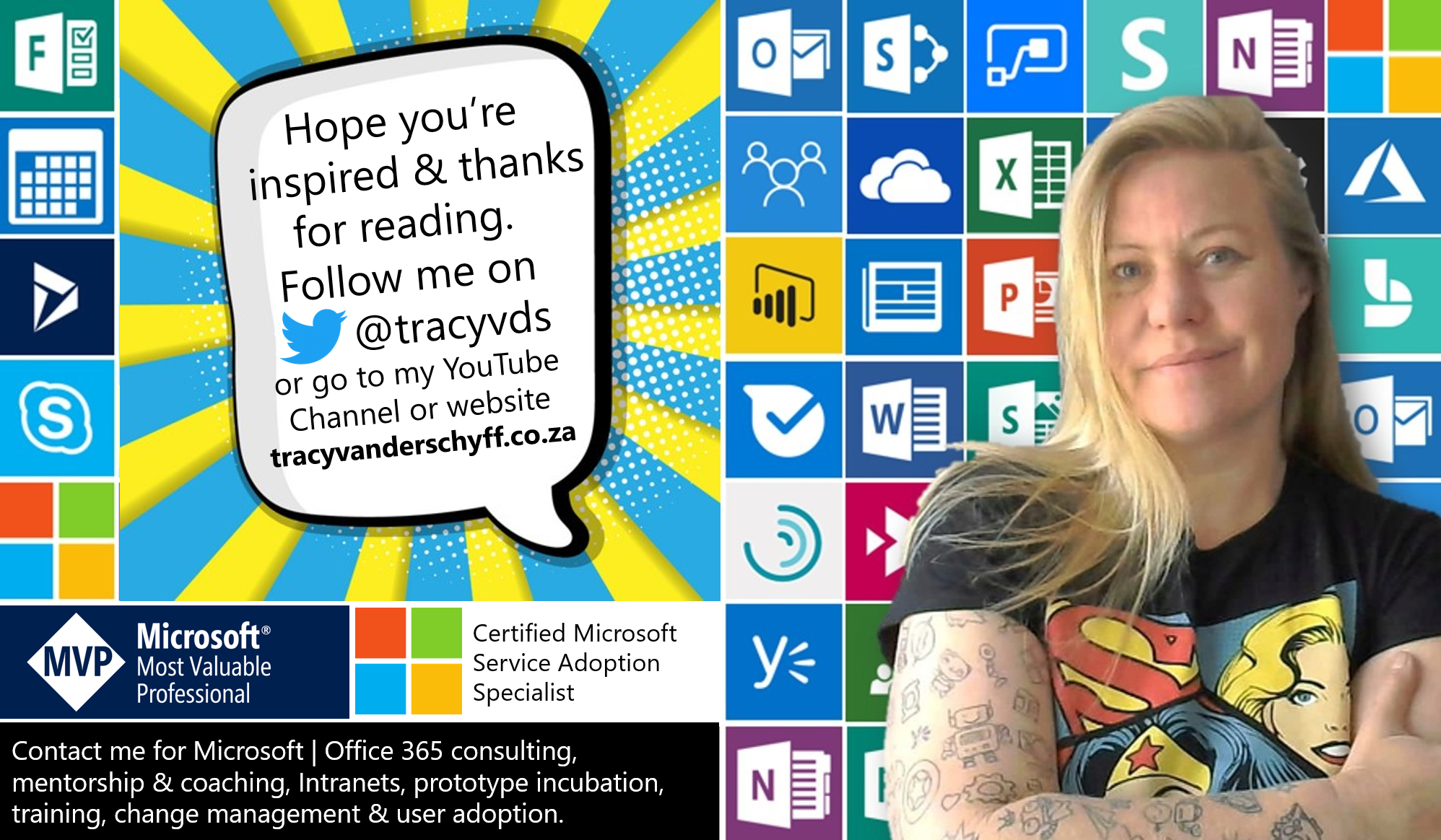Understanding the difference between #Microsoft #Office365 #Consumption and #Adoption, might help you redefine your success criteria and measure it different. Now that is if you agree with me that they are two different things. Let’s see if I can change your mind, or maybe, you can change mine.
Adoption
Adoption is the action or fact of choosing to take up, follow, or use something.
Consumption
Consumption of goods and services is the amount of them used in a particular time period.
“Consumption is forcing your kids to eat broccoli, adoption is them actually liking it, understanding that it’s good for them and asking for more.” Quote by me
Consumption:
I meet way too many people who chase consumption. Of course this is directly linked to their commission and bonus structures, so that’s understandable. But it does have a long-term side effect. Selling a license is relatively easy. Especially if the client doesn’t have much options with products reaching end of life, or no-brainer savings on new types of licenses.
However renewing the license becomes more difficult if the client realises they’re paying for more than they’re actually using. You definitely don’t have to explain the value of #Microsoft365 | #Office365 to me, but for a client who only used Exchange, Office and SharePoint before it will be difficult to see the value of Teams, Forms, Sway, Flow, PowerApps, Stream, OneDrive etc, if they’re not actually using it.
Tracking Consumption:
“The Office 365 adoption content pack in Power BI enables admin to visualize and analyze their organization’s Office 365 usage data, create custom reports, and share the insights – pivoting by attributes available in Azure Active Directory such as location and department.” Read more…
Although the report states “Adoption”, you need to realise that this tracks licenses assigned and whether the product is actually being used which is consumption:
Adoption:
In the definition you’ll see “choosing to take up” and the only way you can get someone to agree or choose to do something, is if they see the need for it, understand how it will improve their work life AND know how to use it efficiently (ADKAR).
I’ll use OneDrive as an example. Most companies I’ve spoken to (after they’ve rolled out OneDrive), did it via email, similar to the below example, sometimes with even less information. They’re confused why I think that’s not good enough because “the product is self explanatory and not much different to the file shares the users were already used to“.
Hmmmmm…… my left eyeball starts quivering uncontrollably. 🙁
I’ll then spend a couple of minutes with them, talking through files on demand, known folder move, different types of sharing, blocking downloads, setting expiry dates, revoking access, versions and recycle bin, integration with Microsoft Teams, Exchange Email and SharePoint, the mobile app, co-authoring & OCR Scanning. Most of which they’re not even aware of, and I’ve made my point.
This is not an upgraded network printer or a new Office version. This is a new way of work life, it’s literally a game changer.
Consumption is the user having a OneDrive license assigned to them, and them now saving their documents there (with no other choice).
Adoption is them using it efficiently, understanding how to protect and help themselves if something goes wrong, saving space on their pc by using files on demand and collaborating | sharing with confidence.
Tracking Adoption & ROI
Now this is where it gets real difficult, which is most probably why most people don’t bother doing it. There is no Power BI report to track efficiency, productivity gains and happy employees (yet). You’ll gather this by feedback through surveys (Forms) and monitoring behaviour, attitude and company culture. But let’s imagine that the above OneDrive features that I mentioned will eventually save your users 5 minutes a day (of course it will), not to mention avoided cost due to risk / data breach.
In a company of 10,000 users it will take about 62.5 days to train them to use OneDrive (30 min each, 20 in a class, 8 sessions per day), at a cost of $5,000 per day for the trainer as well as the ‘cost’ of the users for 30 minutes to attend the training, then you’ll have a productivity gain of $4,500,000 and investment gain of $4,000.000 for the year. HOW IS THAT NOT WORTH THE TROUBLE?
And no, you can’t save the cost of training by just sending them a link to a video, because users are not digitally literate enough yet to know that taking time out to learn will actually save them more time later, we have to fix that culture first. Once they’re comfortable with technology, they’ll become self-learners and then videos will work.
I think I’ve made my point by now. Going after real adoption is worth it. It’s hard work and needs dedication and consistency and apart from the ROI on productivity savings, it will also change your company culture in a positive way. If you still think I’ve got this all wrong, comment on the blog or reach out on social media, let’s have a friendly debate 🙂
Moving to the Cloud or stuck somewhere without adoption? Contact me for a FREE 60 minute, Microsoft 365 Immersion Experience.
Disclaimer: I create content about Office / Microsoft 365. Content is accurate at time of publication, however updates and new additions happen daily which could change the accuracy or relevance. Please keep this in mind when using my blogs as guidelines. And yes, I change my mind all the time as well, because “The only thing that is constant, is change”.
My life mission is to “Facilitate the evolution of human capabilities”: Reach out on: Website > LinkedIn > SlideShare > Twitter > Medium > YouTube > MVP Profile > Contact Me






Leave a Reply